Topic / Energy / In-depth
SWB Regional Analysis
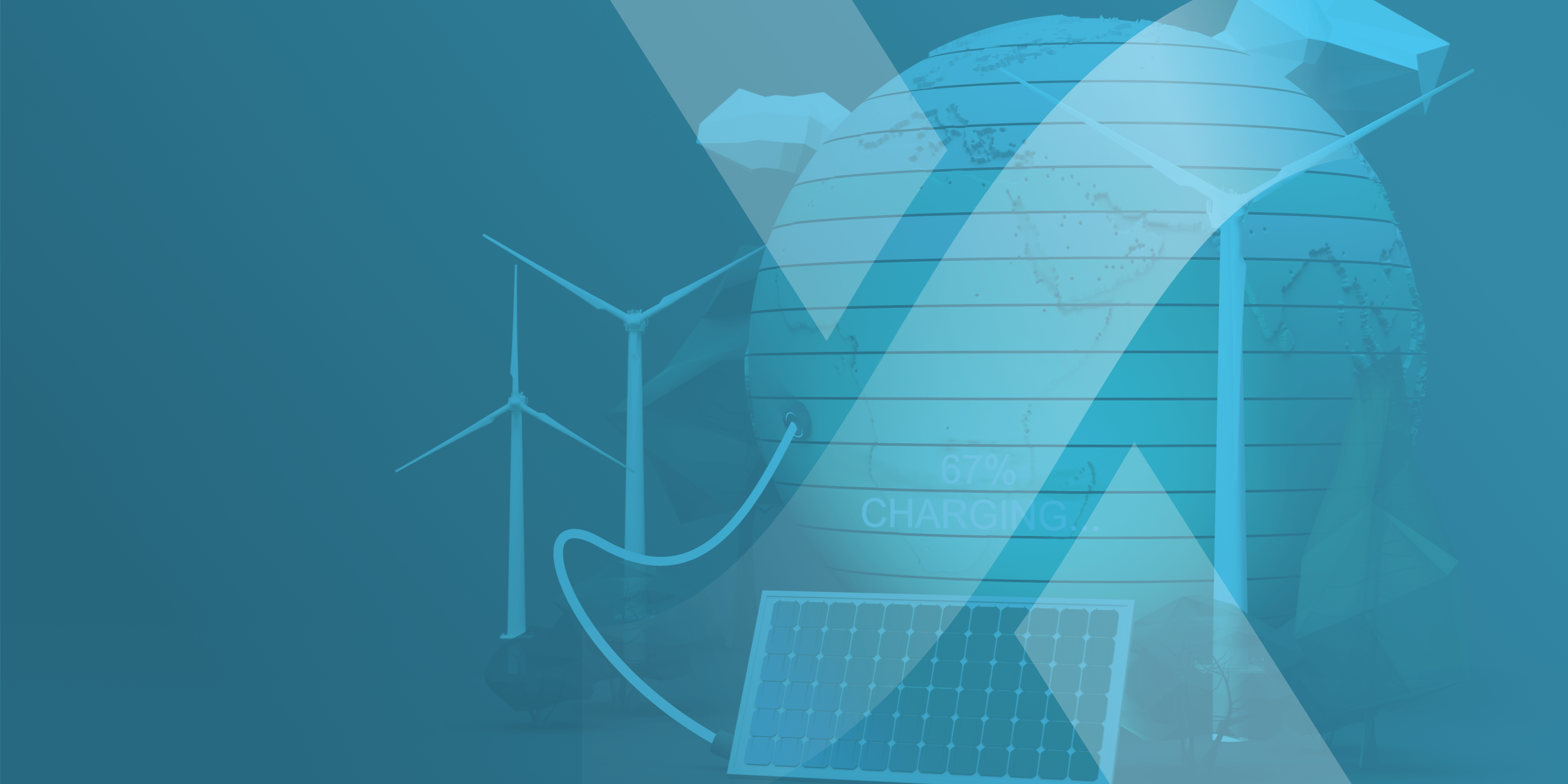
Our regional analysis proves that 100% solar, wind and battery is possible anywhere
The question of whether or not a 100% SWB electricity system is physically and economically feasible has been the subject of substantial research across academic, private and nonprofit sectors.
RethinkX's regional analysis shows that:
- A 100% SWB system is both physically possible and economically affordable.
- The amount of battery energy storage required to support a 100% SWB system is much lower than is widely believed.
- A 100% SWB system will be the cheapest option for electricity generation in most populated areas by 2030.
- A 100% SWB system is physically possible and economically affordable by 2030.

Below you will find analyses of different regions as they illustrate the viability of a 100% SWB system and the potential of SWB Superpower
In Rethinking Energy 2020-2030, our regional analysis included California, Texas and New England.
We presented findings for each region’s Clean Energy U-Curve, system costs, and SWB Superpower output.
By extrapolating our results to the entire country, we found that the continental United States could achieve a 100% SWB system by 2030 for less than $2 trillion, with an average cost of electricity nationwide of under 3 cents per kilowatt-hour if 50% or more of the system’s Superpower is utilized
California
California possesses an abundance of sunshine but relatively modest onshore wind resources. Many other populated regions around the globe, particularly among low- and middle-income countries, receive a similar amount of sunshine and wind. California has been an aggressive early adopter of clean technology and associated public policy in general for several decades, and of solar PV in particular. This forward-looking stance has positioned California to be a leader in the SWB disruption of the energy sector. Other regions looking to take a leadership position will benefit from learning from this state’s example.
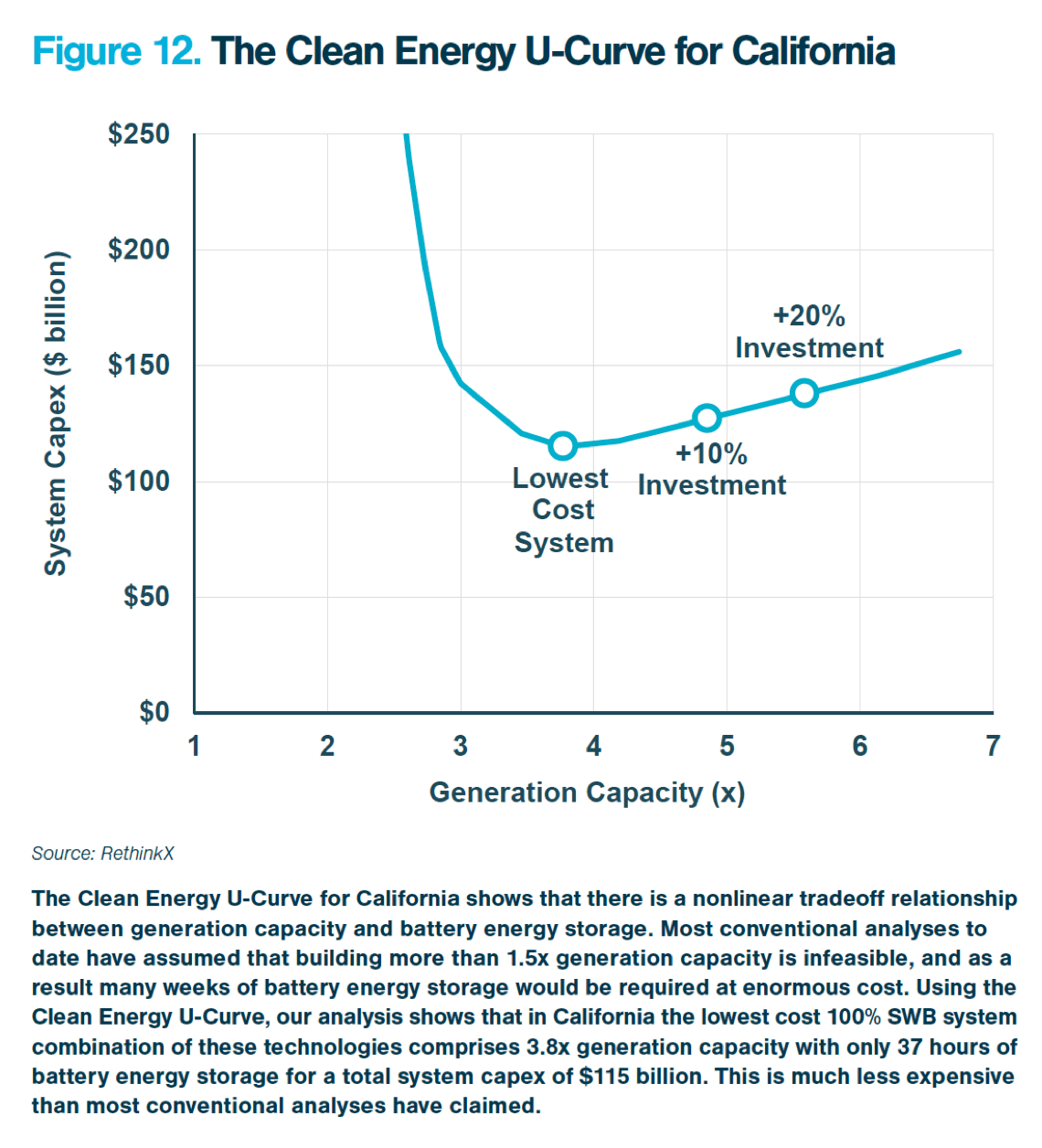
Texas
Texas is a geographic region that enjoys an abundance of both sunshine and wind resources. Few other populated areas of the globe have such a bountiful clean energy endowment. Texas also has a large and energy intensive industrial sector compared to other regions of the United States. Texas offers exceptional opportunities for the clean disruption of fossil fuel energy use.
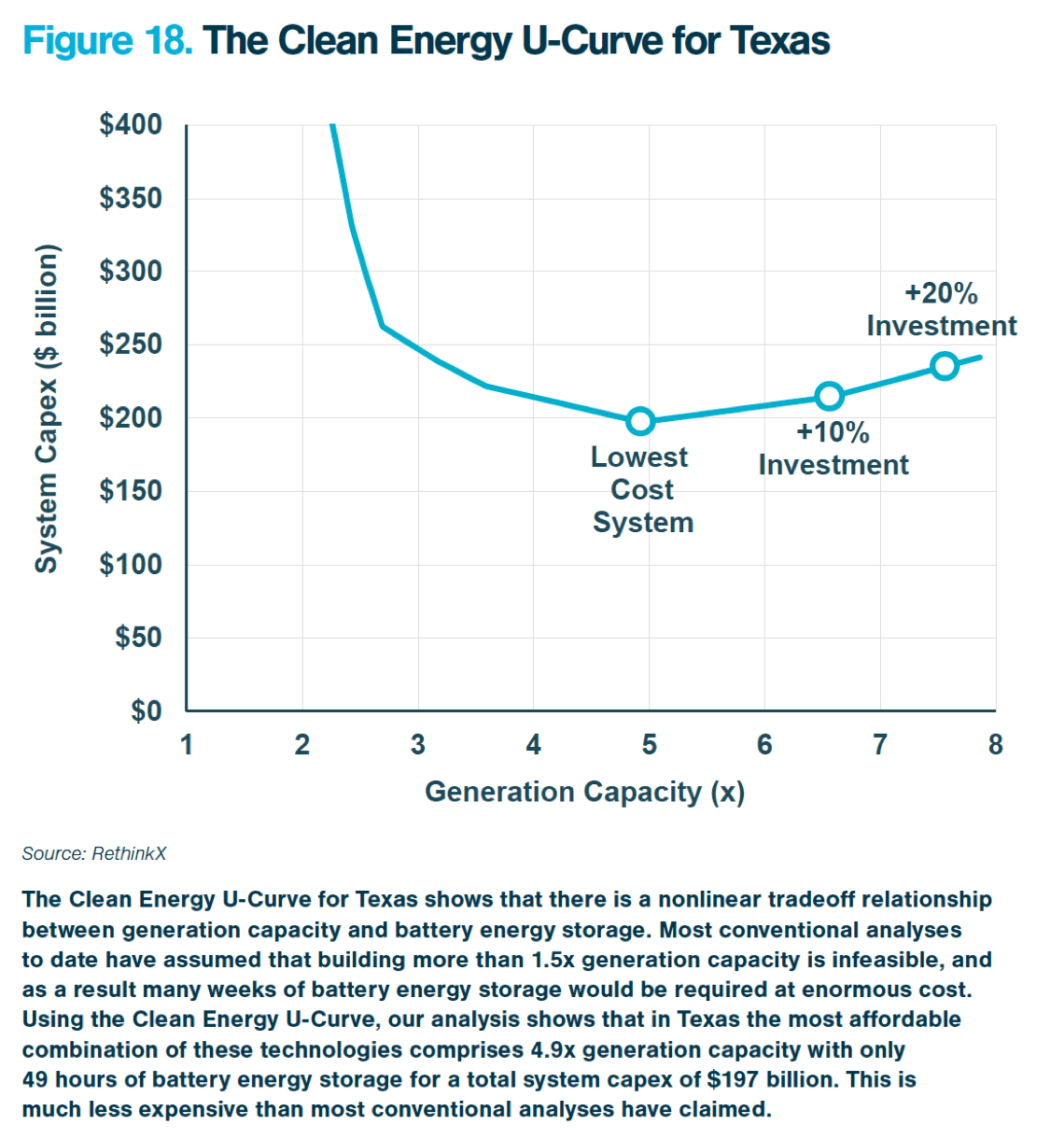
New England
New England is the region of the continental United States with the poorest combined endowment of sunshine and wind resources. Globally, regions with similar resources include countries of northern Europe, Japan, parts of Russia and parts of China. Nevertheless, our analysis shows that even in these areas a 100% SWB system is possible and affordable by 2030.
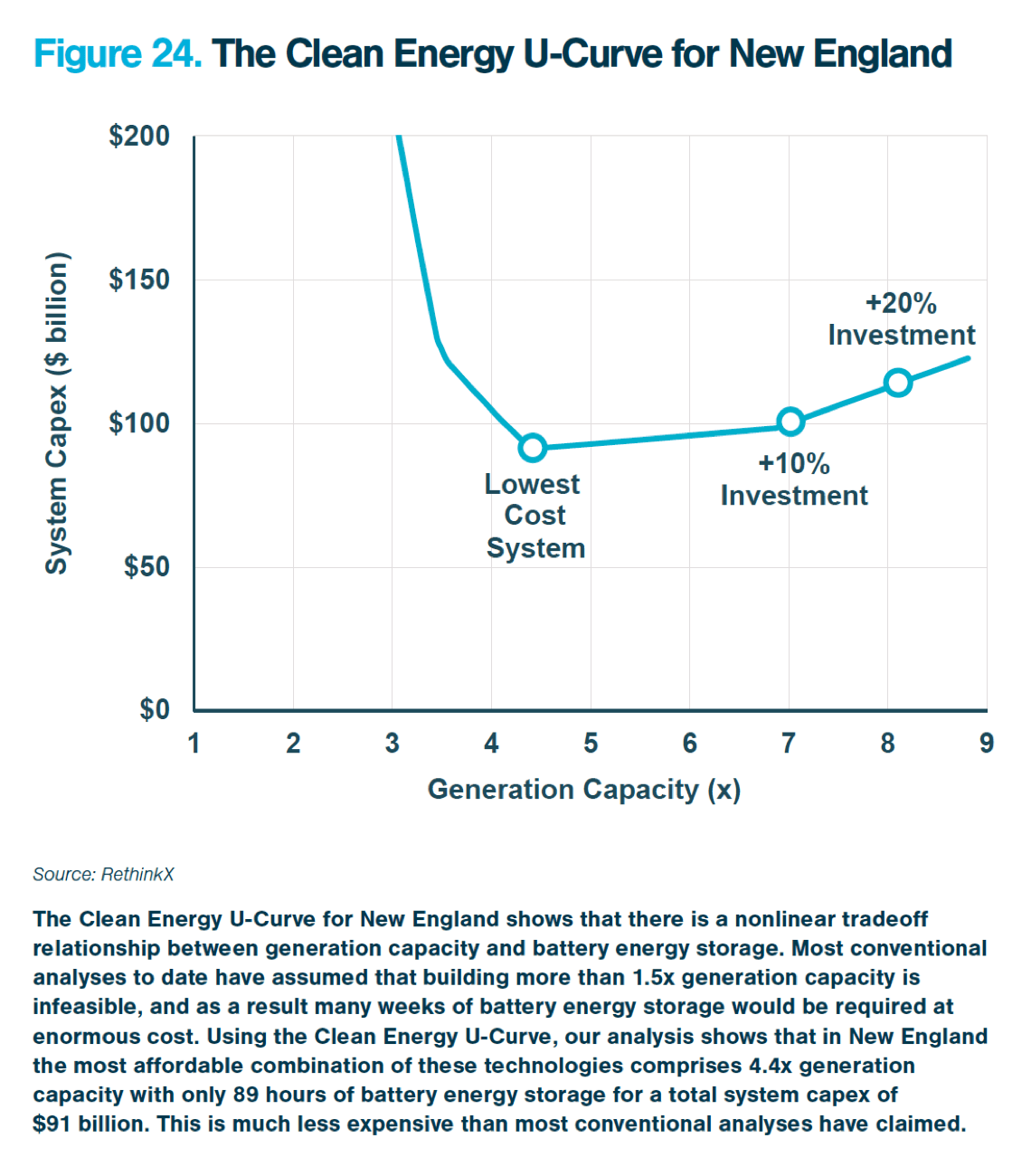
Why did we choose these regions?
We chose these regions because together they provide a geographically representative picture of the entire continental United States, and by extension much of the rest of the populated world as well.
California enjoys abundant sunshine but comparatively little wind, Texas possesses an abundance of both sunshine and wind, and New England has more modest endowments of both resources.
The vast majority of the world’s population live in areas where sunshine is much more abundant than in New England.
As such, the findings of our analysis generalize to nearly all other populated areas of the world as well.
What conclusions did we draw?
- We show the lowest cost 100% SWB system for each region based on the logic of the Clean Energy U-Curve.
- We report three different sets of SWB Superpower findings for each region: lowest cost 100% SWB system, lowest cost 100% SWB system +10% investment, and lowest cost 100% SWB system + 20% investment.
- These additional capital investments of 10% and 20% respectively yield disproportionately large increases in SWB Superpower. Some regions may decide that the benefits of energy superabundance justify this additional investment.
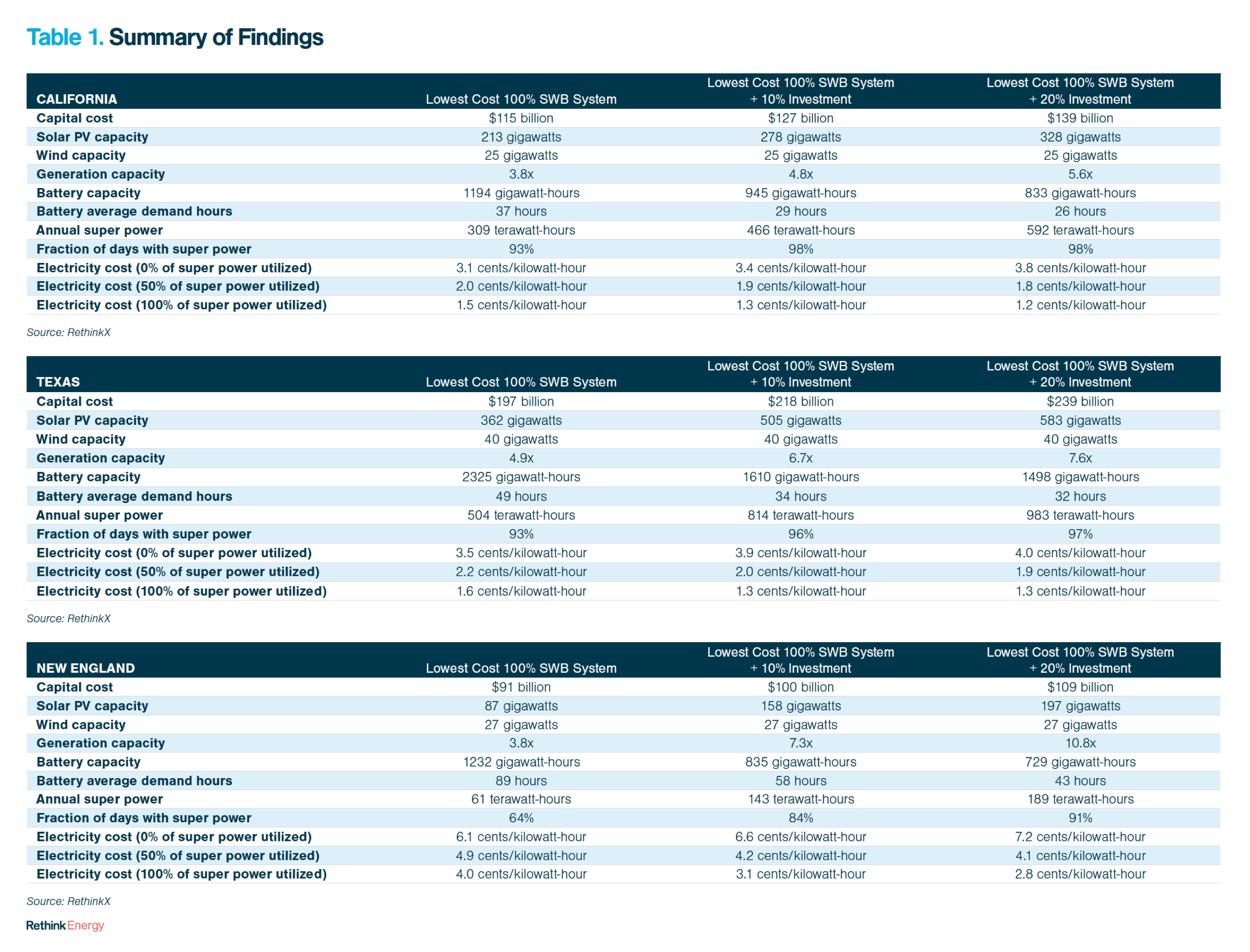
Watch our Director of Research describe our regional analysis in detail:
In our Policy Primer for German Energy Sector & Decision Makers (2017) we discussed how different combinations of solar, wind and battery power can meet 100% of Germany’s roughly 500 terawatt-hours of electricity demand.
In Germany, the lowest-cost SWB system meeting all of Germany’s electricity demand will produce an additional 130 terawatt-hours of SWB Superpower each year.
However, the returns on SWB capital investment are large, dramatically changing the economics of energy. An additional 20% investment above the lowest-cost configuration increases super power by 375%, to 615 terawatt-hours per year.
Germany
Germany can achieve an independent and self-sufficient energy system by accelerating a clean energy disruption at a cost of $367 billion over 10 years.
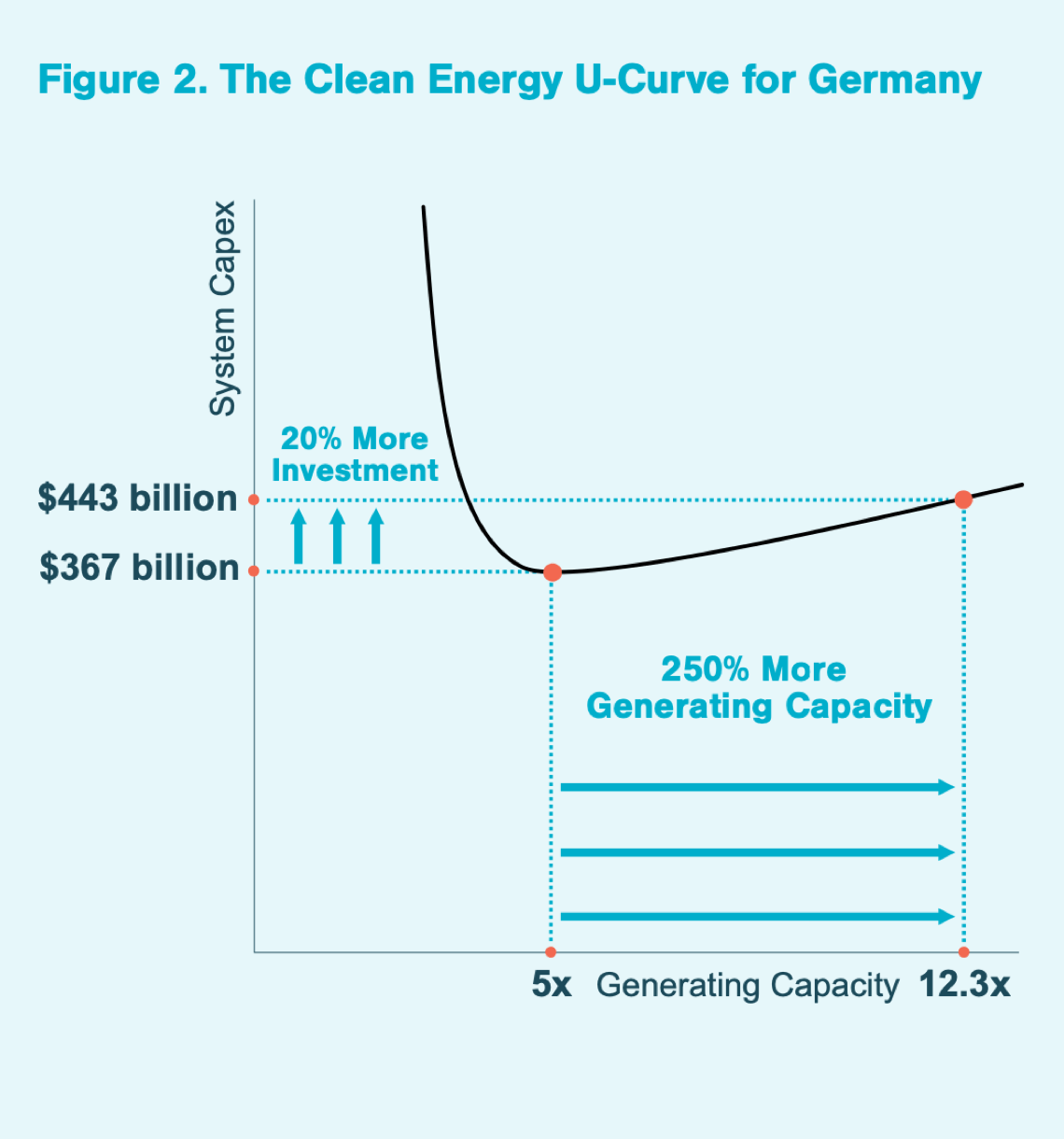
Choices for decision-makers
Our analysis aims to help policymakers, investors and other decision-makers rethink the future of energy by asking what possibilities the new 100% SWB system will offer their regions.
The social, economic, political, environmental outcomes over the course of the 2020s depend on the choices we make today, and the benefits that accrue to those who lead the disruption rather than follow or resist it will be profound.
%20Copy-min.png?width=717&name=Report_Hero_Rethinking-Energy-LCOE%20(1)%20Copy-min.png)
Featured Report
Discover the Disruption of Energy in more depth
Download our Rethinking Energy 2020-2030 Report.

















.png?width=732&name=Copy%20of%20Website%20imagery%20-%20Featured%20Image%201200x628%20(9).png)
.png?width=732&name=Website%20imagery%20-%20Featured%20Image%201200x628%20(3).png)



